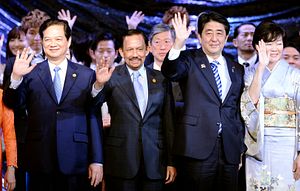In every discussion of Japan’s relations with Asia, especially since the return to power in 2012 of Shinzo Abe, there is a need to specify “which Asia.”
On the one hand, there is, in Northeast Asia, Japan’s isolation amid its lingering history-related frictions with neighbors, and, on the other hand, its relatively friendly ties with the rest of Asia.
The rise to power of a hawkish nationalist and revisionist prime minister in Japan has coincided with a sharp transformation in China’s foreign policy. In this game-changing turn, the newly invigorated China discarded three decades of Deng Xiaoping’s “keep a low profile” policy to evolve towards a muscle-flexing assertive new power under its current President Xi Jinping.
The Japanese voters may not have intended it this way, but the fact is that while nervousness mounted in Asia in the face of an increasingly assertive China and the unsettling context of declining American influence, Japan, the second most powerful country in the region, has elected a leader in the person of Prime Minister Shinzo Abe with the potential to offer a badly needed alternative to China’s growing shadow in the region.
Inconvenient Past
Too bad that this potential had to come with a strong dose of nationalistic revisionism that ended up adding unnecessary tensions to an already volatile Northeast Asia. Add Abe’s excessive subservience to America’s strategic interests, and the resulting poison in the geopolitical atmosphere of the region has unfortunately contributed to weaken Japan’s weight as a reliable regional counterbalance to China.

































